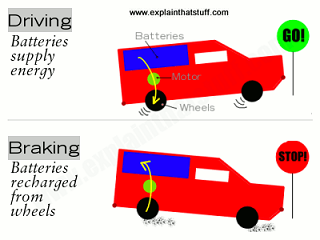Lightning Hybrids – I’m Neither a Daydreamer Nor a Believer

Well, I hope I wasn’t too obnoxious with him, but:
I’m not a fan of regenerative braking based on what I know about electric transportation, even on a good day. Most of the gains in fuel efficiency that are associated with hybridization of the drive train have nothing to do with regenerative braking. In fact, most (though not all) driving modalities make the return on investment very unattractive. I don’t believe his overall figures here. As you could observe, though I tried not to be nasty about it, I was pretty unimpressed that the source for all that material was a white paper that they themselves had written. I’d love to see some real-world case studies that show me I’m wrong, or at least, reports from reputable sources outside his company.
More importantly, the idea that you can recover more energy with hydraulics than you can with batteries is pure nonsense. This one I REALLY don’t believe. 🙂 What he’s claiming is actually a violation of the laws of thermodynamics. Charging a battery with a generator that converts mechanical to electric energy has an efficiency in the low 90s. These guys’ system is three times more efficient? I think we all learned when we were little kids that this can’t happen.

For the most part, sensible drivers use a minimum of breaking – coasting up to red traffic lights, easing off the throttle when approaching a junction etc. Such drivers offer relatively low potential for regenerative breaking as they do not waste much energy through excessive breaking.
Where regenerative breaking could score is in electrically powered 4 wheel drive vehicles where the motors operating as generators replace a conventional friction breaking system. In situations where regenerative breaking involves adding extra hardware, it is doubtful whether the cost would be justified by the return.
Exactly right. The total available energy, sorry to state the obvious, is the heat energy that winds up dissipated in the brakes, and yes, for most drivers that’s far less than commonly believed. The only real exceptions to this are vehicles that make frequent stops, and the only legitimate examples of this are those that deliver mail or packages.
Best place for regenerative braking is US mail trucks which I believe should be replaced with electrics that have regenerative braking. This would help the US mail service eliminate it’s biggest budget variable, fuel, and reduce maintenance cost. Panels on that nice flat roof wouldn’t hurt either.
Yes. And that’s a very large fleet, thus extremely attractive to purveyors of these technologies.